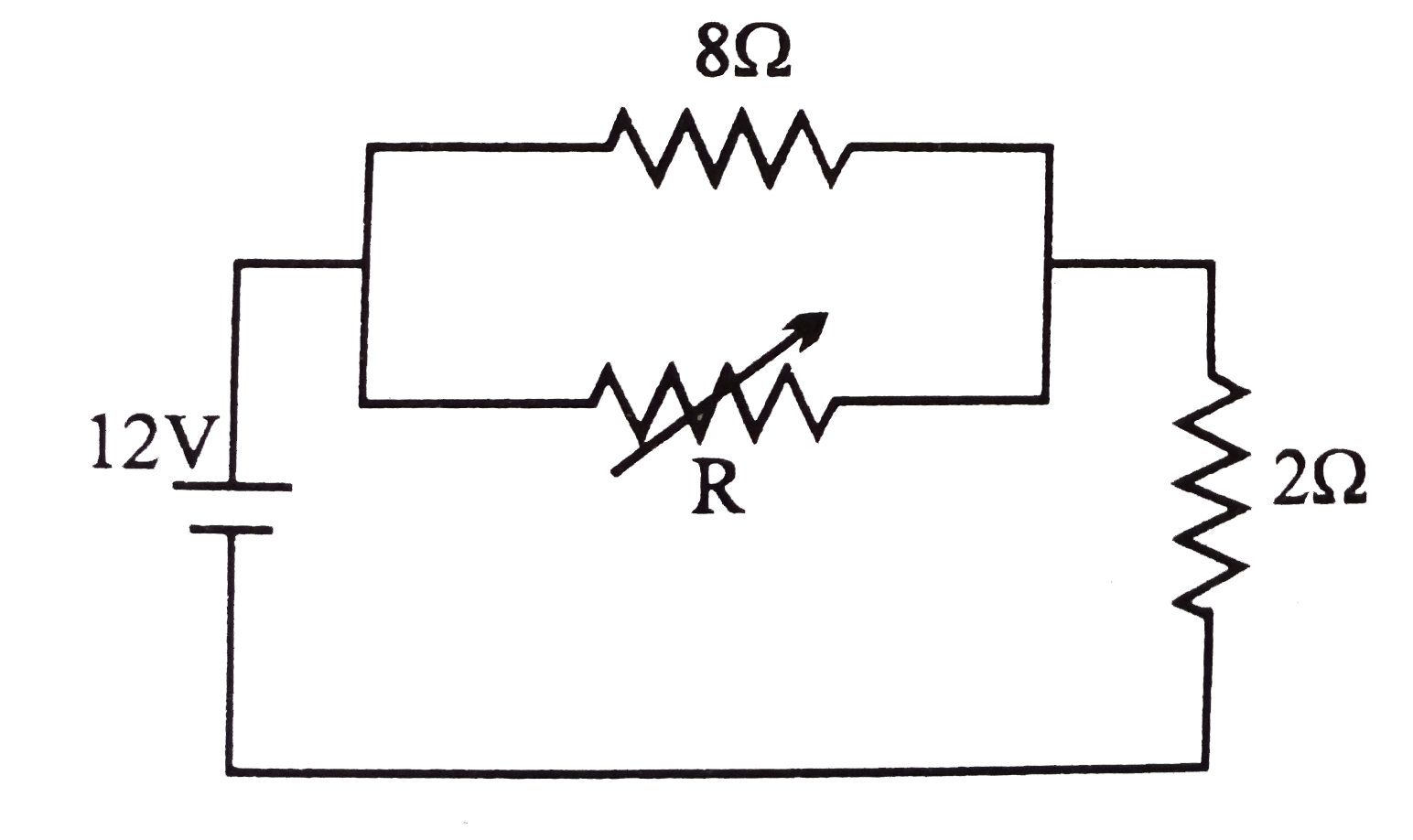If the power dissipated in 5Ω is 20 W then power dissipated in 4Ω is -

4W
6W
10W
20W
The correct Answer is:A
P=VI=V2/R, voltage constant

P∝1R
then power in 10Ω will be 10W when I constant then
P=I2R
P∝R
P'10=410⇒P'=4W
Similar Questions
In the network shown in the figure, power dissipated in 3Ω and 12 W. Power dissipated in 4Ω will be

View SolutionA person with body resistance between his hands of 10KΩ accidentally grasps the terminals of a 18kV power supply.
(i) If the internal resistance of the power supply is 2000Ω, what is the power dissipated in his body?
(ii) What is the power dissipated in his body?
(iii) If the power supply is to be made safe by increasing its internal resistance, what should the internal resistance be for the maximum current in the above situation to be 1.00mA or less?
View SolutionIn the circuti shown ,the thermal power dissipated in R1 is P. The thermal power dissipated in R2 is .

View SolutionIf in the circuit, power dissipation is 150 W, then R is :

View SolutionIf the power dissipated in the circuit is 4W then the value of R is:
_2019_CBT7_E01_014_Q01.png)
View SolutionIf the power dissipated in the circuit is 4W then the value of R is:
_2019_CBT7_E01_014_Q01.png)
View SolutionIf in the circuit, power dissipation is 150W, the R is

View SolutionIf the power dissipated in the 27Ω resistor in the circuit shown is 108 watt, the potential difference across the 4Ω resistor is
View SolutionA battery of 3.0 V is connected to a resistor dissipating 0.5 W of power . If the terminal voltage of the battery is 2.5 V , the power dissipated within the internal resistance is :
View SolutionThe value of the resistance R in figure is adjusted such that power dissipated in the 2Ω resistor is maximum. Under this condition

View Solution

